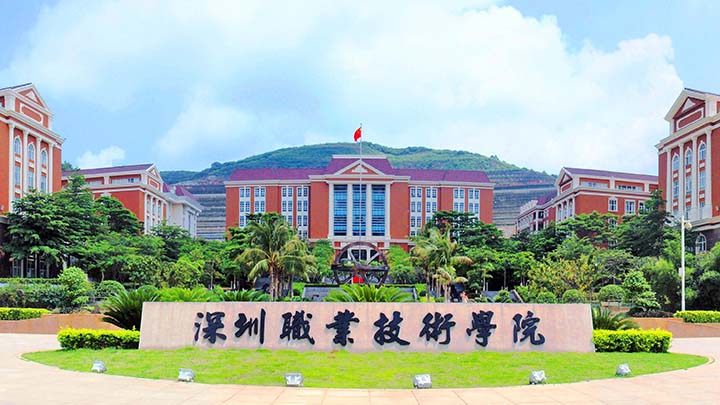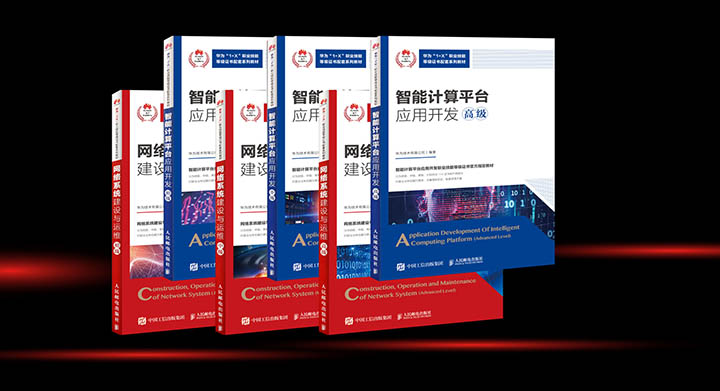Shenzhen Polytechnic: Integrating Industry Practice and Education
Enterprise products, solutions & services

Reading guide: Vocational education is thriving, supported by collaboration between universities and enterprises. This trend is embodied by the work Shenzhen Polytechnic and Huawei are doing together: based on a shared vision, we're collaborating to explore new ways to train Information and Communications Technology (ICT) specialists.
"In recent years, the ICT industry has developed rapidly, and related technologies have been quickly updated. Huawei's trainers share their experience with us to help us keep pace with the times and learn about the cutting-edge technologies in the industry," Xu Jianbo, a Shenzhen Polytechnic 2015 graduate, told CCTV News in April 2021.
Perhaps Xu Jianbo didn't expect that the introduction of Huawei certifications at his school would be so valuable in his job hunting. He probably didn't believe that one day he would work at a Huawei Authorized Learning Partner (HALP) company and support the development of his alma mater with the knowledge and practical experience he learned. He likely didn't anticipate that one day he'd feature on a national news program about how vocational education is thriving.
Xu Jianbo is just one of the tens of millions of vocational college students nationwide, and one of many from our university. Since 2006, we have worked with Huawei to develop a training model that focuses on teaching the skills that enterprises need. Working together, we have built majors, designed courses, developed platforms, and trained students and teachers. By 2020, more than 3000 Shenzhen Polytechnic students had passed Huawei certifications. And after graduation, many of them entered the ICT industry and undertook major informatization projects, such as constructing government networks and bank data centers, making important contributions to the development of diverse industries.
As one of the first colleges in China to independently organize higher vocational and technical education, Shenzhen Polytechnic is known as a pioneer of higher vocational education in China. Aiming to train innovative and skilled individuals to meet the demands of the digital world, we prioritize on-the-job skill training to improve the students' practical skills.
Since the establishment of Shenzhen Polytechnic, every student is required to take a certification related to their majors to demonstrate their professional skills. In 2006, numerous communication technology major graduates expressed that many enterprises were dismissive of their certificates. This made us realize that the content of relevant vocational appraisal certificates wasn't up to date with the ways industries were developing. Clearly, we urgently needed to close the gap between vocational talent training and the skills that enterprises actually required.
We began to analyze problems and seek solutions. After a period of investigation and discussion, we identified two root causes: first, the course structure of higher vocational colleges at that time was mainly guided by the undergraduate education system without the integration of industry practices and education; second, teachers' practical capabilities should be further improved. With these insights in mind, we concluded that universities and enterprises working together was the only way to improve teaching quality.
The latest technical standards of the industry and talent demand are guidelines for vocational education, but for a long time this information has been in the hands of enterprises, especially the leading enterprises in the industry, such as Huawei.
Since 2006, we have worked closely with Huawei to incorporate its engineer certification into our ICT curricula and training system, so that students can master cutting-edge technologies and improve their practical skills. In 2018, this training model became the first one in Guangdong Province to win the National Teaching Achievement Award Special Prize.

Huawei's 1 + X textbook series
The two sides have become more closely connected, and we're looking forward to setting new benchmarks.
In 2019, the continuous development of digital technologies was breaking down boundaries between different careers, and industries desperately needed cross-domain technical talent. We had to break the traditional major boundaries and offer our students more options.
In 2019, the State Council issued the National Implementation Plan for Vocational Education Reform (20 articles), which required vocational colleges and application-based universities to pilot the education diploma + professional certificates system (known as 1 + X certificates).
Huawei responded positively to this plan and invited our university to work together on the 1 + X project, so we started collaborating, capitalizing on our respective strengths. Huawei has advanced technologies, understands what skills the ICT ecosystem needs, and understands job responsibilities, while Shenzhen Polytechnic has extensive theoretical and pedagogical resources and can provide advice on naming the standards, the skills that the standard requires, and the targeted colleges and universities from a pedagogical perspective. Based on these strengths, the collaboration is thriving.
In 2020, Huawei established an evaluation organization for vocational education and training. Meanwhile, its Professional Skill Level Standards for Network System Construction and Operations and Maintenance (O&M) and the Professional Skill Level Standards for Intelligent Computing Platform Application Development were approved to be included in the 1 + X certificates system. Huawei 1 + X focuses on technology fields that are mature, widely used, and have a huge demand for talent, such as connectivity and computing. As well as providing complete learning materials, such as textbooks, PowerPoint, lab manuals, and online courses, Huawei 1 + X also offers written exams and lab exams to assess students' theoretical knowledge and practical skills. To improve the influence and applicability of certificates, Huawei 1 + X certificates can, in some circumstances, be considered equivalent to Huawei HCIA certificates.
We have worked together to develop six teaching materials, train 1 + X trainers, and incorporate 1 + X into Shenzhen Polytechnic's training program.
In June 2020, six supporting teaching materials of Huawei's 1 + X certificate system were published, including Professional Skill Level Standards for Network System Construction and O&M and Professional Skill Level Standards for Intelligent Computing Platform Application Development. These teaching materials were very practicable, strongly supporting teachers' teaching.
To improve students' practical skills and ensure that the Huawei Network System Construction and O&M certification courses run smoothly, we have built a Huawei Internet Protocol (IP) Technology Training Lab that can meet the requirements of junior, intermediate, and high-level certificates. There are 10 sets of equipment in the training room. Each set of equipment includes four routers, nine switches, two wireless access points, and one wireless controller, supporting scenario-based teaching.
Drawing on previous experience, Shenzhen Polytechnic has incorporated the Huawei 1 + X certificates into the training programs of majors such as communication technology, computer network technology, information security and management, software technology, and Enterprise Intelligence technology services, to ensure that students master cutting-edge technologies.
In October 2020, guided by Huawei, Shenzhen Polytechnic organized the first set of Huawei 1 + X Network System Construction and O&M certificate exams in China. Sixty students from majors that were piloted in the 1 + X system participated in the exams, with a pass rate of 87%. The practicality of Huawei's 1 + X also attracted many Shenzhen Polytechnic students from majors that weren't piloted in the system, so we held a second exam on December 19, 2020.
"Huawei's 1 + X covers 39 new occupations announced by the Ministry of Human Resources and Social Security and involves important underlying technologies of enterprises," said Lu Xin, president of the China Technical and Vocational Education and Training Association and former vice minister of the Ministry of Education.
"It demonstrates the significance of cutting-edge digital technology, accelerates the development of education and science and technology, supports the transformation and upgrading of the industry, and also plays a great role in leading the 1 + X pilot."
At Shenzhen Polytechnic, many students like Xu Jianbo have benefited from the cooperation, which has enabled them to become IT experts. Some of those students have been employed by Fortune 500 companies. For example, Gu Jianxing, a 2019 graduate, was hired as a hardware engineer in Huawei's network energy department, with a salary far higher than the industry average.
The Outline of the 14th Five-Year Plan (2021–2025) for National Economic and Social Development and Vision 2035 states that during the 14th Five-Year Plan period enhancing the adaptability of vocational and technical education will be prioritized, including capitalizing on the strengths of vocational education, continuously improving the quality of education, and further integrating vocational and general education.
At Shenzhen Polytechnic, we will support that vision by keeping up with technological trends and developments in industries to adjust our courses based on Huawei's products, training more students to be prepared for the industry. We will also share new vocational certification education standards and models in China to promote the development of vocational education in countries along the Belt and Road Initiative.